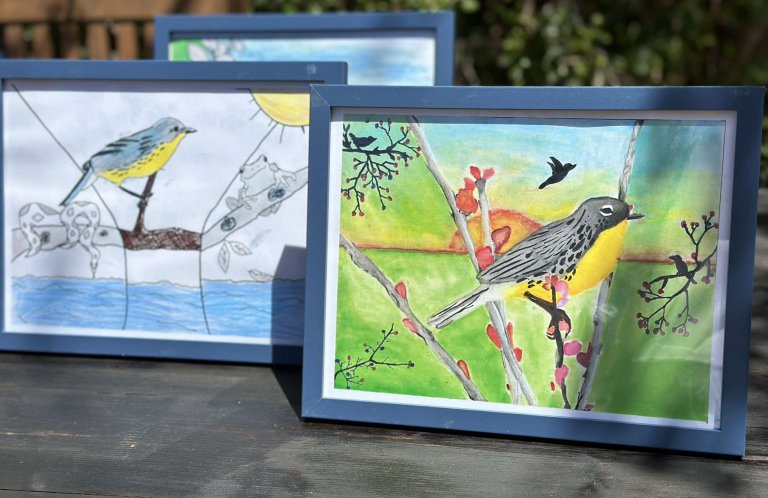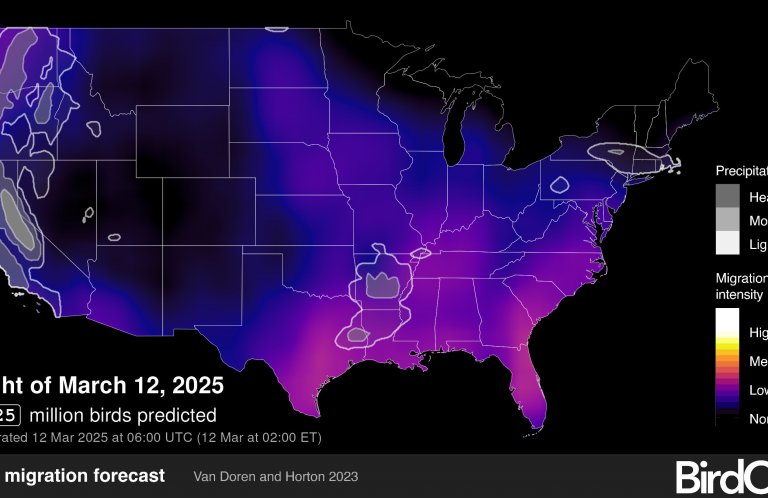Making a New Home for Kirtland's Warblers in Wisconsin
A timber harvest that began last fall on a tract of land in central Wisconsin is one of the first steps in a long-term plan to create new habitat for the rare Kirtland's Warbler.
The harvest of Red Pine is taking place on one-third of a 400-acre property in Adams County that The Nature Conservancy (TNC) acquired in 2022. Last summer, TNC staff began controlling invasive buckthorn, honeysuckle, and spotted knapweed on the land. This fall, a prescribed fire will replicate the effects of a natural fire by clearing the land and preparing the soil bed for the project's next step: the planting of more than 100,000 Jack Pine seedlings in spring 2025. Grants to ABC from the federal Regional Conservation Partnership Program are supporting the work.
The Kirtland's Warbler, which was removed from the endangered species list in 2019 after a decades-long recovery from a brush with extinction, continues to rely on the conservation work of state and federal agencies, nongovernmental organizations, and other partners. The species breeds primarily among stands of Jack Pine trees that are 6 to 20 years old, meaning that once the seedlings are in the ground, the waiting begins.
Steve Roels, the Director of ABC's Kirtland's Warbler program, says male warblers are expected to turn up five years after the planting, and females likely would join them a year or two later to nest on the tract. If all goes well, that section of the property would remain reliable breeding habitat for the warblers until 2045, when the trees would be harvested and the process would begin again.
Meanwhile, the partners involved in the project, which is led by Hannah Butkiewicz, TNC's Central Sands Project Manager, plan to implement the harvesting, prescribed fire, and Jack Pine planting process on the remaining two-thirds of the property over the next 10 to 20 years. The goal is to create a shifting mosaic of Kirtland's Warbler habitat as well as pine and oak barrens on the property.
More than 95 percent of the warbler's population breeds in Michigan, but in 2007, the species began nesting in Wisconsin and Ontario as well. Wisconsin's current breeding population has about 40-60 birds, and Adams County hosts 30-40 of them. Roels notes that the species has “an uncanny ability to find habitat, which makes sense since the habitat is ephemeral. So we are confident that the birds will be able to find the new habitat when it is ready.
“Expanding the breeding range of Kirtland's Warbler is a top goal for the Kirtland's Warbler Conservation Team, where ABC plays a lead role,” Roels says. “Having birds breeding outside the core range in Michigan's Lower Peninsula is a key insurance policy for a species that remains one of the rarest songbirds in North America.”
The decades-long work plan on behalf of the bird is invigorating, says Butkiewicz. “I'm happy to be part of it,” she says. “I'm really looking forward to watching things develop. This project will be an exciting part of my career.”
ABC thanks the Weeden Foundation, Persevere Fund, Harry A. and Margaret D. Towsley Foundation, and many others for their support of our Kirtland's Warbler program.


















































